Why you can trust TechRadar
Samsung has opted for an SLR-like design for the NX1 and while it's not in the same size bracket as the Nikon D4S or even the Canon 5D Mark III, it is quite large (138.5x102.3x65.8mm) for a compact system camera (CSC). It's more Panasonic GH4 than G6, but many will feel that gives it more gravitas as well as making it easier to handle.
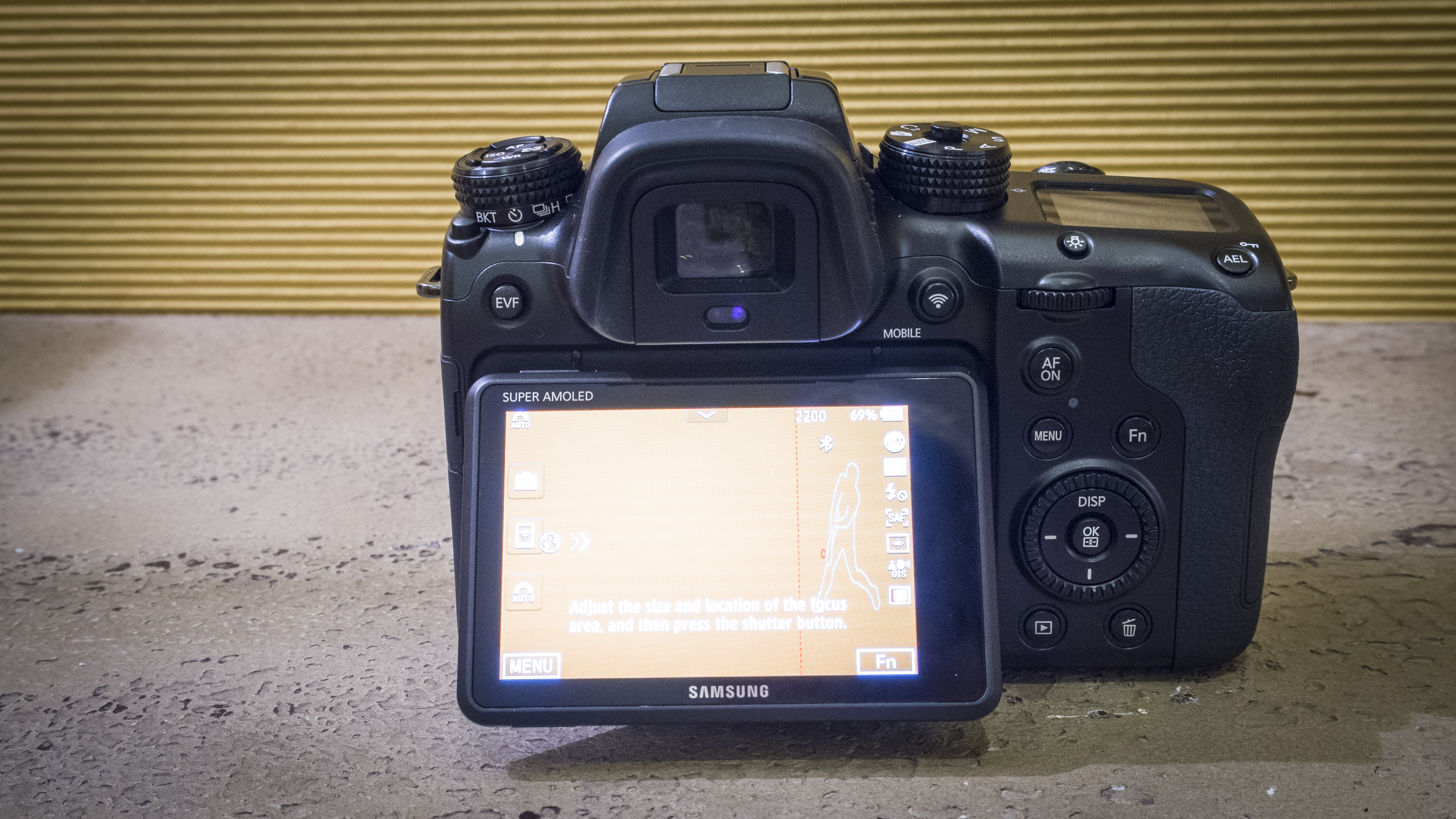
The NX1 has a magnesium alloy shell and is dust and splash-proof so it can be used in bad weather. It feels very nicely made and is exceptionally comfortable in the hand, with a deep front grip and an effective thumb-ridge on the rear. I was happy to walk with the camera in my hand for a few hours at a time and not use the provided strap. In addition, the dials all have a knurled edge and a very high quality feel.
Being a compact system camera means that there are no mirror movements to dampen in the NX1, so it is predisposed to being quiet. The mechanical shutter sound (there's also an electronic shutter) is also very low, making it a discrete camera to use even when shooting at 15fps. That could prove very helpful when shooting wildlife or street subjects.
The tilting mechanism of the rear screen feels pretty tough and is a bonus for shooting landscape format images and video at high or low angles. Samsung has used vari-angle screens on some of its past cameras including the NX30, and it would have been nice to have one on the NX1 to offer assistance when shooting upright images at low or high angles. However, we're told that the company's research indicates that this is a weak point and the NX1 is designed to be a tough camera for serious users.

I also found the AMOLED rear screen very good and it provides a clear view with plenty of detail. As usual, however, it suffers from reflections when the camera is used outside, so it's often preferable to use the viewfinder to compose images. Like most compact system cameras, the NX1 has a Manual Focus Assist (MF Assist) option that sets the camera to show a 5x or 8x magnified view when focusing manually. As we have seen with other Samsung cameras, however, this enlargement is only applied to the centre of the frame. This means that if your subject is off-centre you have to focus and recompose the image, which can lead to slight errors in focusing, especially with close subjects. On the plus side, the combination of the detailed view and focus peaking makes manual focusing easy.
The screen is very responsive responsive to touch and the menu layout is clear. While some of the icons look sophisticated, however, others look a little like the illustrations in a coloring book, but they are easy to see.
There's an option to show an electronic level on the screen and the EVF to help keep the horizon level. I found this level easier to see than some when using the screen to compose images at awkward angles because the line is a little thicker than most making it more visible.
Sign up for breaking news, reviews, opinion, top tech deals, and more.
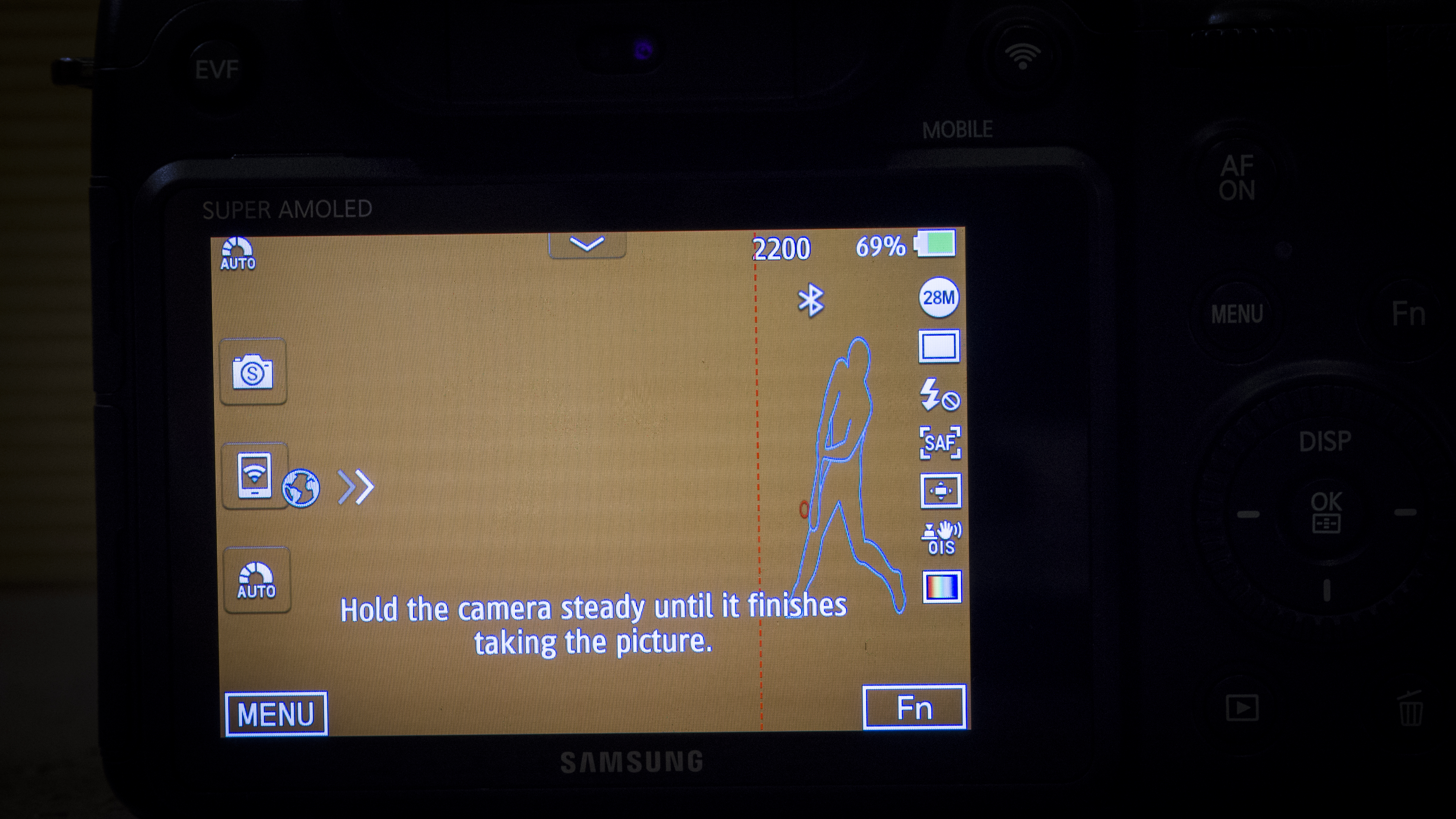
To the right of the top-plate is a mode dial giving access to all the exposure modes that you'd expect (shutter priority, aperture priority, manual, program and automatic) as well as the Samsung Auto Shot (SAS) and two custom options. This dial has a lock to prevent it from being knocked out of place and helpfully it's the type that you can choose to leave unlocked if you want.
Just to the side of the mode dial is a small LCD screen that displays key shooting data – this is a first for a Samsung CSC and something that will be appreciated by photographers shooting with the camera on a tripod – although with a tilting screen there's another way to see this data.
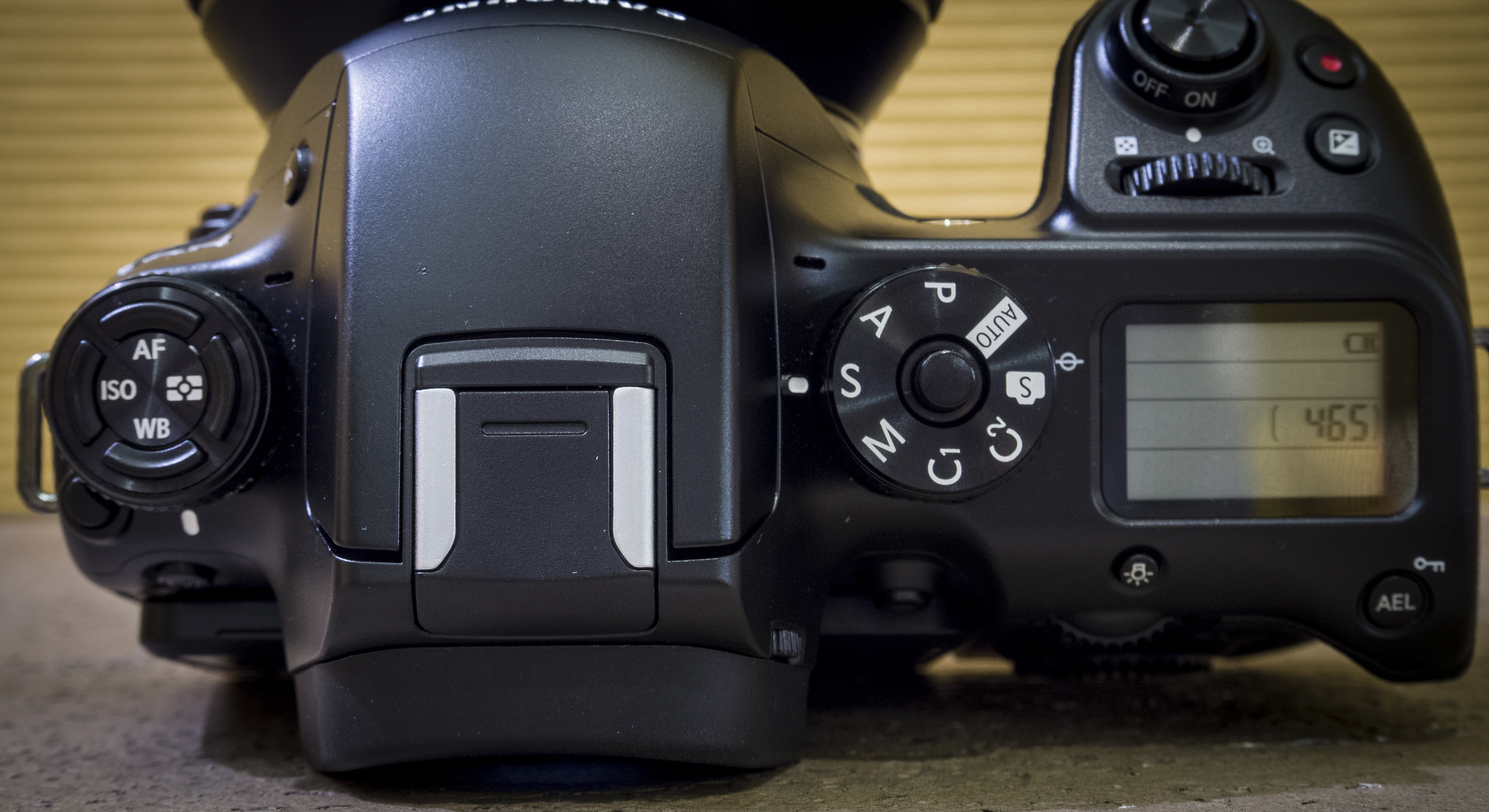
On the left of the top-plate sits the drive mode dial, giving a quick way of setting the camera to continuous shooting or auto exposure bracketing. This dial is topped by four slim buttons that give access to the AF, white balance, metering and sensitivity options.
Selections and adjustments are made using the front and rear control dials, the dial around the navigation controls on the back of the camera or by touching the screen. While the rear dial seems well positioned to the side of the thumbrest and easy to locate with the camera held to the eye, it took me a little while to get used to the position of the top dial just behind the shutter release button. The controls on the back of the camera are all pretty sensibly arranged and within easy reach.
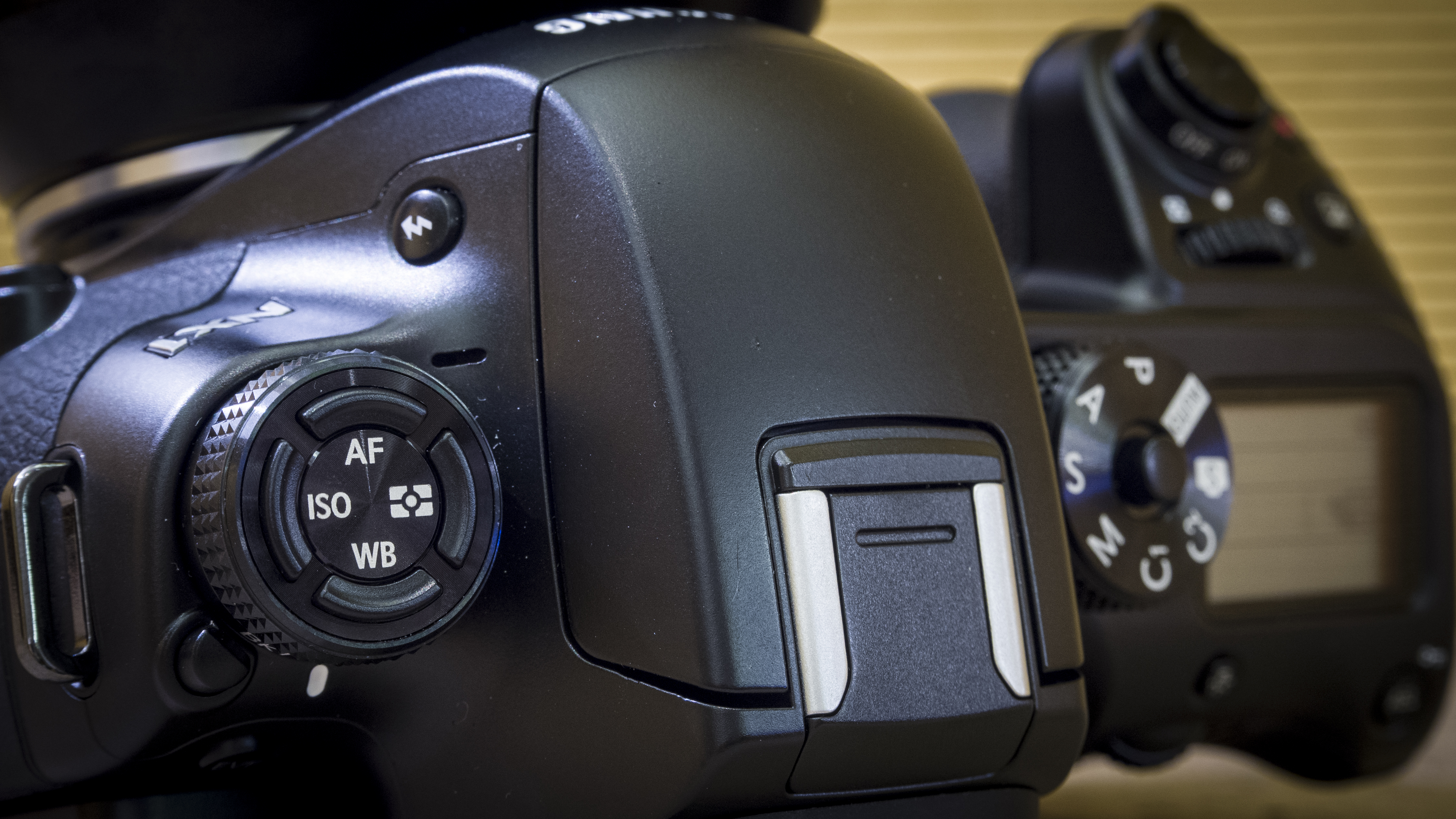
The active AF point may be set with a tap of the screen or by touching the button at the centre of the navigation controls and then using the buttons or dials to find the one that you want. It's fairly quick process, but a more direct route would be even better. Although it is possible to customise the function of the navigation controls, they cannot be set to set AF point directly.
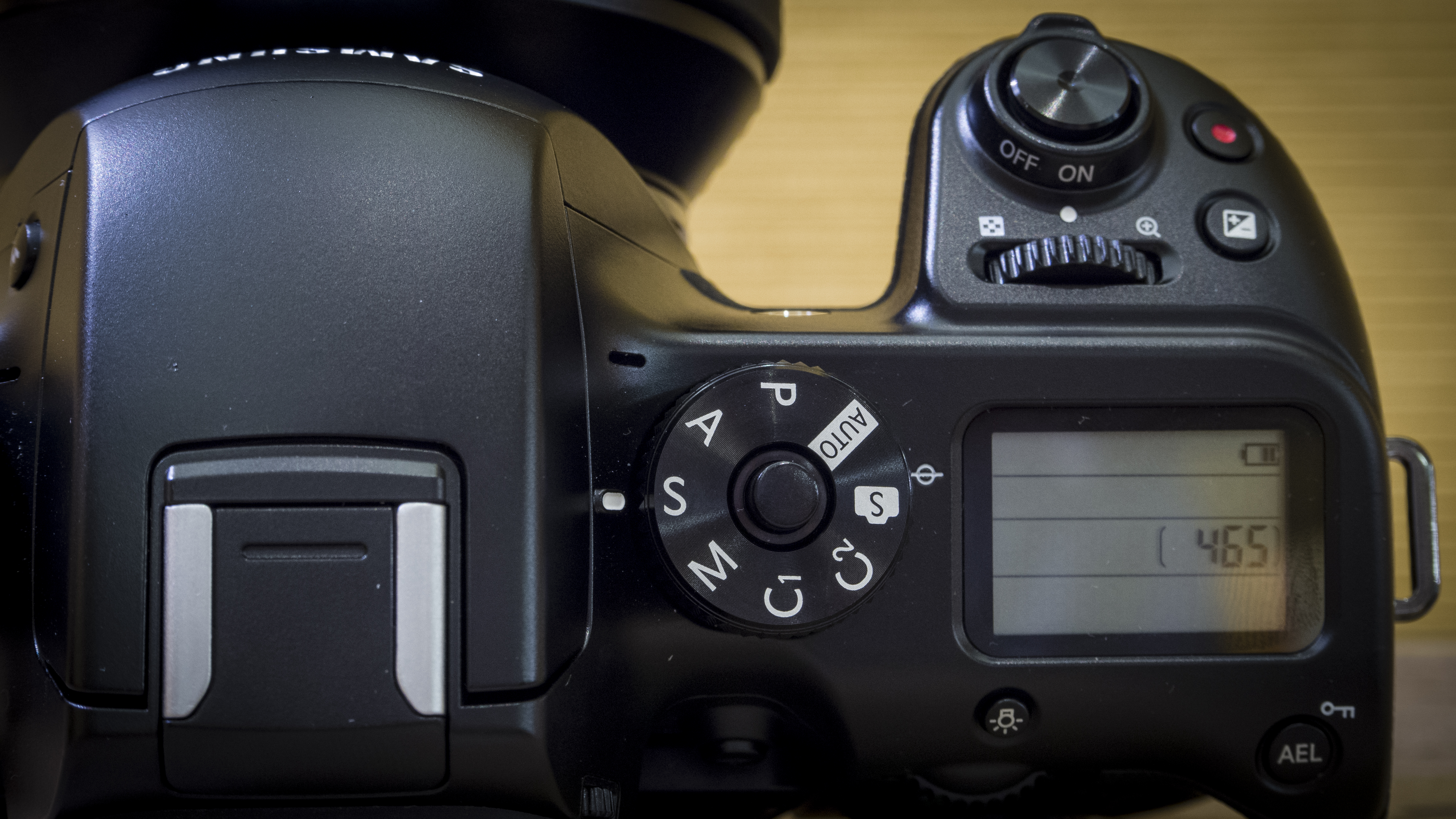
The NX1 is compatible with Samsung's iFunction lenses, which means there's a really quick and easy way to change key features like sensitivity, white balance and exposure compensation with the camera held to your eye when such an optic is mounted. Pressing the iFn button on the lens brings up a lens-barrel-like display in the EVF or on the main screen. The front dial on the camera is then used to select the desired feature while the rear dial is used to select the setting. It's very quick and easy to use.
While the NX1's interface is generally clear, there are a couple of oddities within the menu. Tracking AF mode, for example, is set via the main menu under the Touch AF options (along with Touch AF, AF point and One touch shot) and once it is selected the camera is set to Continuous AF mode. Pressing the AF button on the top of the camera shows that it's set to Continuous AF mode with the other options (Single, Active and Manual) greyed out. It seems strange to split the AF controls in this way especially as when AF point mode is selected in the Touch AF options so that the AF point can be selected with a tap on the screen, the AF button mode options are available.
It also seems a bit odd that video recording can't be started if auto exposure lock is still active after the AF-on button has been pressed to focus the lens.
The app (Samsung Camera Manager Inst) for transferring images and controlling the camera remotely is currently available for Android smartphones and tablets, and is set to go live on the Apple App store in mid-December. It is currently possible to connect to Wi-Fi networks and email images to a iOS device, however. Connecting the NX1 to an Android smart phone or tablet or takes a little puzzling out, but once it's done it's easy to reconnect.
